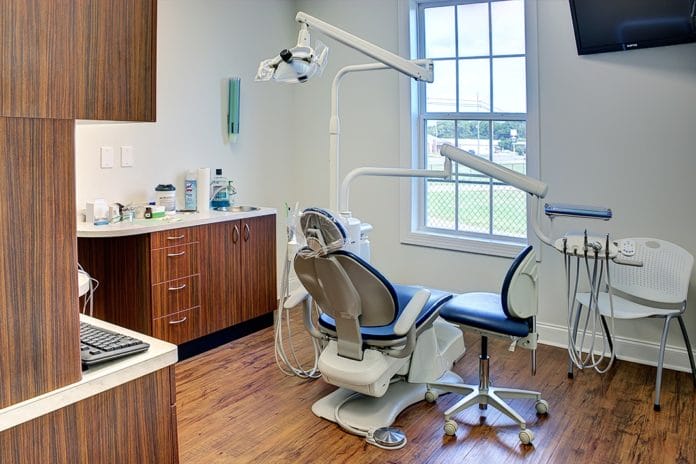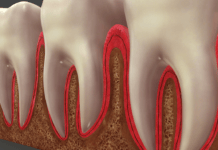Editor’s Note: Information about COVID-19 is changing on a daily, sometimes hourly, basis. We have made every attempt to ensure this article is up-to-date at the time of publication, but with the rapid changes occurring, some information may have changed since publication. Please visit https://www.coronavirus.
This article does not discuss “new infection control protocols” because, right now, the CDC only has interim updates in infection control practices for seeing emergency patients. They have not come out with new infection control guidelines for when things are back to normal and elective procedures (hygiene) can begin. To cover “the new normal” would just be speculation and not based on any real requirements that are in place or evidence based.
The temporary closure of your dental practice was likely a stress-inducing event for the owner, staff, and patients. In a time of crisis, it can be helpful to focus on the next step forward, which includes the steps you are taking today to ensure a smooth return when the spread of COVID-19 is controlled.
Current Workflow
Many states have mandated the ongoing care of patients for emergency treatment during your temporary closure to reduce pressure on local emergency rooms. The practice will provide limited care during this time. It is clear a “temporary closure” is truly a “limited temporary closure.”
The practice will need to connect with previously scheduled patients in order to reschedule their appointments. The practice will likely field more calls than normal from anxious patients. The practice needs to maintain collections as much as possible, which requires the filing of claims, tracking down unpaid claims, and sending narratives or requests for reviews to insurance companies.
The steps outlined below will provide needed support for ongoing workflow as well as a smooth transition back to full operations.
- Keep a part-time front office team member on the payroll for as long as the budget will allow. Ideally, this person is cross-trained to assist the dentist in emergency care. If the budget does not allow, the dentist will need to take on the responsibilities outlined.
- Be sensitive to unemployment laws and offering hours to allow your staff to take advantage of federal and state programs.
- Maintain reduced phone hours (four hours per day) to answer phones and return messages, directing patients to the doctor’s emergency line for after-hour calls.
- Work on collections and reducing your aging accounts receivables. This is a great time to review denied claims, file review requests, and collect monies owed. It is critical to infuse as much cash flow into the practice as possible.
- Reschedule patients into the future to make sure you come back to a full schedule. You may not know the exact return date as information is changing quickly, but it will be easier to move an appointment a second time than it will be to come back to an empty schedule. Push patients out to the most recent return to work date you have from the authority in your state.
- For patients who are not comfortable rescheduling at this time, track them on a short call list. That will be your immediate go-to scheduling list when you return.
- Identify patients who need treatment right away to prevent an emergency. The ADA has provided guidance on the definition of emergency care.
Patient Communication
Most everyone in our country has read about the COVID-19 pandemic and are adjusting to changes in their daily lives. However, many do not consider dentistry to be elective, and learning their trusted practice and provider is temporarily closed will cause anxiety.
That is especially true for patients who have an existing treatment plan. A needed filling may feel like an emergency to them. Learning the practice is temporarily closed, possibly for a couple of months or more, creates stress. Calm their fears with good verbal skills when rescheduling patients and frequently communicate with patients through social media during your closure.
- Do not send a letter to the entire patient base to announce the temporary closure as this may create unnecessary fear for patients who will not experience an impact during this time.
- Call each patient on the schedule to reschedule their appointment, reassuring them that they will have priority scheduling and selecting a date. Remind them that you will be available if they have an emergency.
- Communicate daily via social media channels or your website. Post something fun, perhaps of staff members weeding their yard or doing a puzzle − anything that reflects life as normal with a daily reminder that you are still there, can see emergencies, and hope everyone is staying safe and healthy.
Staff Communication
- The doctor should frequently communicate even if he/she does not have all the answers! Staff members will be looking for leadership and direction. The communication the doctor provides now will have a lingering impact on how supported staff feels during this time.
- Set up a group text so everyone can continue to connect. This can be done by any staff member; be sure to include everyone in the group text, including part-time team members. Share budgeting tips, pictures, news, and create a forum to ask questions of each other. A few budgeting tips you can share:
- Spouses/partners of displaced staff can temporarily stop all 401K contributions to increase cash flow.
- Some banks are allowing a three to six-month deferment of mortgage payments; it does not hurt to call and ask. This may be true for utility companies as well.
- Check with state and federal programs for unemployment or other packages that may be available to them. Share your experiences filing unemployment claims; consolidated information will help other team members.
- The doctor should send detailed updates via email to the staff. Send a text in the group text to ask everyone to check his or her email when an update is available. Text messages tend to be checked more frequently than email. But messages can be lost, and it is difficult to send detailed information in that format.
Economic Relief
Relief packages are currently in the process through the federal government. Owner doctors can check with their CPA and attorney for the latest offerings to take advantage of the programs available. In the meantime, many banks are offering three to six-month deferments for loan payments without penalty or interest.
- The ADA is requesting specific relief for dentists. Follow their progress in this effort on ada.org.
- S. Small Business Administration is offering relief to businesses impacted by COVID-19. https://www.sba.gov/page/coronavirus-covid-19-small-business-guidance-loan-resources
- Individual state, county, and city websites may offer additional relief.
- Federal and state tax assistance may be available, check your local sites.
Return to Work Steps
- Doctors should consider adding additional days or hours to the schedule when you return. There should be a higher demand on your return with many overdue patients. Additional availability will help meet patient demand, allow opportunities for staff to make up for lost wages, and increase collections more rapidly. Doctors should touch base with staff as your return date gets closer to check availability. Be aware of overtime challenges. Many dental staff members work less than 40 hours per week; carefully plan additional hours to not incur overtime.
- Know your equipment and follow guidelines to restart and recalibrate. Plan to run test strips in sterilization equipment on your return. Run water lines using appropriate disinfectants. If your practice fully closed for a period of time (no emergencies treated) and your mechanical room was shut down, plan to come in a few days ahead of your first day back to make sure everything is running smoothly. If your practice stayed opened on a limited bases, for emergency care only, an assistant should be able to take care of necessary start-up tasks a couple of hours prior to your first patient.
- Take steps to ensure a sterile environment on your return for the safety and peace of mind for patients, staff, and yourself.
- This crisis will likely influence sterilization efforts and techniques. Determine which of those will continue indefinitely as part of your new protocol. For example, if you started wiping down door handles, front desk counters, and reception areas as a new protocol, communicate which of those you expect to become part of the new norm moving forward.
- The EPA recently released a list of approved disinfectants that are effective against COVID-19.
A crisis creates an opportunity to re-evaluate your goals and practice systems and allows time to reflect on changes you would like to make in the future. This is true from both a business and personal level. Perhaps it is time to re-evaluate personal finances and goals for the future or check in with those you care about to see how they are doing on an emotional level. Know that every crisis has a beginning, a middle, and an end, and above all else, stay healthy out there!
Now Listen to the Today’s RDH Dental Hygiene Podcast Below:
References
- Solano, K. ADA Develops Guidance on Dental Emergency, Non-Emergency Care. ADA News. March 18, 2020. Retrieved from https://www.ada.org/en/publications/ada-news/2020-archive/march/ada-develops-guidance-on-dental-emergency-nonemergency-care
- Coronavirus (COVID-19): Small Business Guide and Loan Resources. Retrieved from https://www.sba.gov/page/coronavirus-covid-19-small-business-guidance-loan-resources/
- EPA Pesticide Registration: List N: Disinfectants for use against SARS-CoV-2. March 19, 2020. Retrieved from https://www.epa.gov/coronavirus












